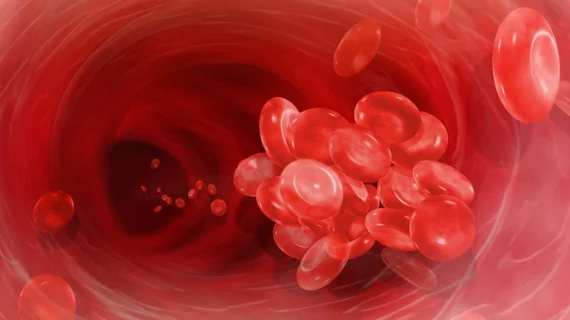Researchers at the University of Georgia have uncovered 27 new metabolites associated with arterial stiffness, according to work published in the American Journal of Hypertension.
Changwei Li, an assistant professor of epidemiology and biostatistics at UGA’s College of Public Health, and his team undertook one of the largest studies of its kind to perform untargeted metabolomics profiling among 1,202 patients in the Bogalusa Heart Study. Using participants’ most up-to-date metabolite panels, Li and his colleagues ran blood sample analysis to identify specific environmental exposures related to arterial stiffness.
Li et al. paid particular attention to certain measures of arterial stiffness, including augmentation index (AI) and pulse wave velocity (PWV). The team adjusted for age, sex, race, education, smoking, drinking, body weight and height, physical activity and estimated glomerular filtration rate, sequentially adjusting heart rate, blood pressure, antihypertensive medication usage, lipids and fasting glucose in sensitivity analyses for significant results.
The researchers identified six novel metabolites negatively associated with AI, of which 2-methyl-2-oxobutyrate had the lowest P value and largest effect size. Another 21 metabolites were related to PWV, of which fructose was the most significant and histidine had the greatest effect size.
“In this study, we identified many metabolites related to coffee drinking, alcohol drinking, Southern foods, dietary supplements and even pesticides,” Li said in a release. “We were able to identify some environmental and lifestyle-related metabolites, build metabolite networks to show how the body reacts to the environmental exposures and, more importantly, tested the effect of those metabolites on arterial stiffness.”
The authors said 16 of the metabolites they discovered were associated with arterial stiffness independent of traditional risk factors. Still, heart rate and blood pressure both contributed to a large proportion of the association for each metabolite (between 25% and 58% and between 9% and 54%, respectively).
Network analysis further identified two molecules associated with both AI and PWV—one of which was composed of metabolites from the glycerolipids synthesis and recycling pathway and another that was involved in valine, leucine and isoleucine metabolism. Li and colleagues said the majority of metabolites were linked to other indications of CVD, but some, like gamma-glutamylvaline and gamma-glutamylisoleucine, are food additives and common cooking ingredients.
“Our study raised [the] possibility that those additives may cause arterial stiffness,” Li said. “Given the wide usage of those additives, future studies are warranted to investigate their role in arterial stiffness.”
He said he plans to run the study again with longitudinal data to refine his team’s results.

